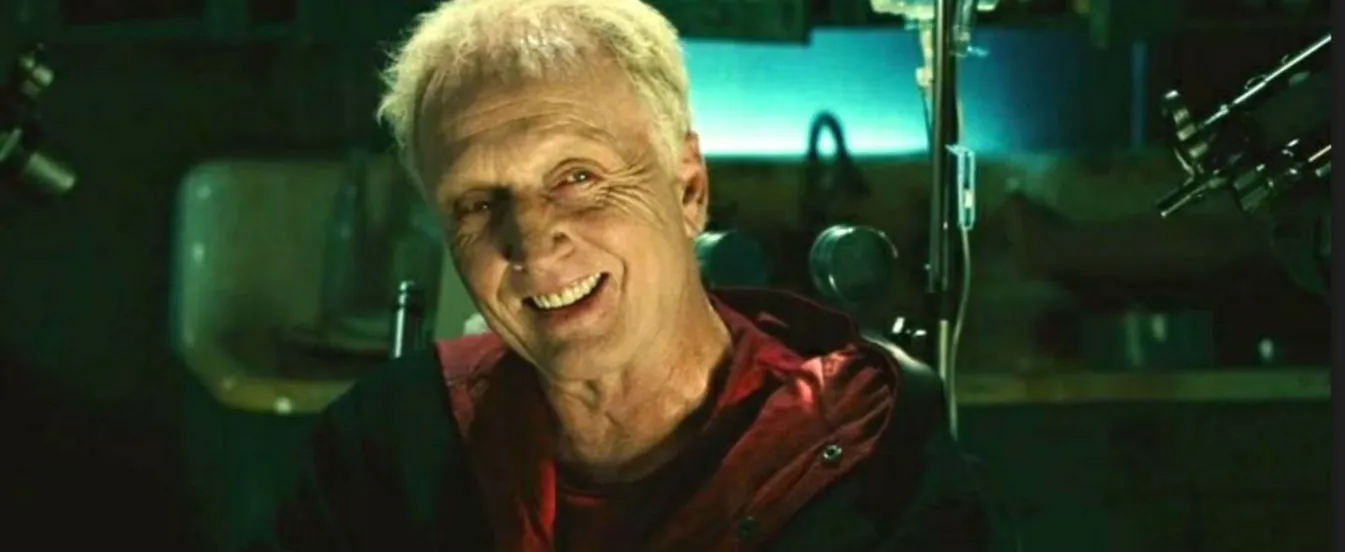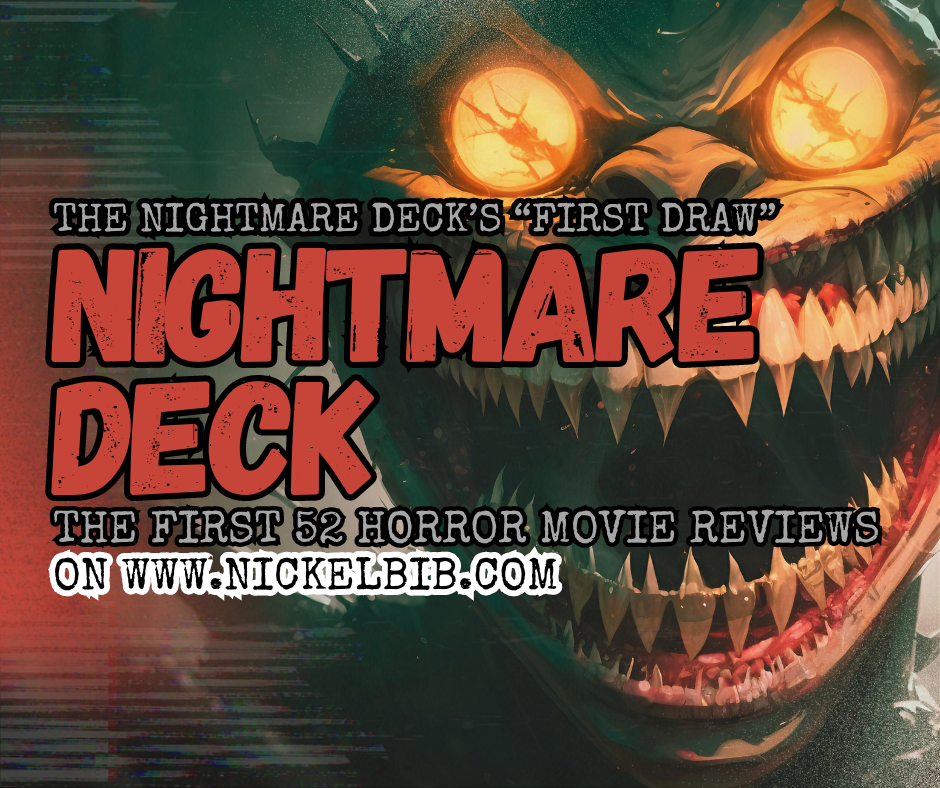A lot has changed for me over the years. A lot has changed for Nickelbib.com (and / or whatever name I went by while I wrote reviews). I have written a lot of them. Sometimes I will go through phases where I only write about one topic or genre in-particular for a long period of time (most often, that genre is horror). Something that has happened between since I started writing reviews and now is that I have become a married man and an adult with responsibilities, which means my time is more finite, making hobbies and interests more difficult to juggle alongside everything else I want to do.
Something my wife and I now do together a lot is we will play videogames (it’s true, almost every videogame I play now, is either directly with my wife or with her as a spectator). However, role-playing videogames often feel like they are our Moby Dick, so to speak. Either because they will fall into the abyss of our dreaded queue and their adventures will never be embarked on, we lose interest, or they simply fall between the cracks of our day-to-day lives.
For that reason, Persona 3 was an ambitious goal we set for ourselves. It is a videogame I had wanted to play for years and years (or, more specifically, Persona 5 was a videogame I wanted to play for years and years – Persona 3, I simply wanted to play first). Now, after clocking out at 75 hours with a Gamerscore of a respectable 590g out of a thousand, I am happy to say I have completed and am now ready to share my thoughts on Persona 3.
As a little bit of backstory for those who aren’t aware, Persona 3 is a videogame developed by Atlus, acting as the fourth installment in the Persona series, a spin-off from the mainline Shin Megami Tensei franchise.
In Persona 3, the player accepts the role of a high-school student who joins many of his classmates to investigate the Dark Hour, a time after midnight where creatures, called Shadows, feed on the minds of humans. The group tasks themselves with ascending Tartarus, a large tower containing said monsters, and stopping the end of the world.
Like the Shin Megami Tensei series, Persona includes elements of a turn-based RPG and sees players wield Personas, or manifestations of their inner self, to fight an array of enemies. The Persona series also incorporates elements of visual novels as well as simulation games, seeing the player progress day by day through a school year and form bonds that improves his Persona’s strengths in-battle.
Early on, I wasn’t certain what to expect from Persona 3 and what it had to offer. I had played some of the Devil Survivor 2 videogame on the Nintendo 3DS, but I was far from what anyone would call initiated. Another videogame I had played from the Atlus game-developer called Catherine, also helped sell me on the Persona series as well. Catherine isn’t connected to the Shin Megami Tensei franchise exactly (it isn’t a spin-off, for example), but they are alike in a lot of different ways, such as the art style and approach to storytelling (Catherine is one of my all time favorite videogames).
I found a lot to like about Persona 3, as I would have had to in-order to allocate as much time to it as I did. The story and its characters both have a lot to like about them.
As prefaced, Persona 3 isn’t merely a role-playing videogame, but, instead, also incorporates elements of a school simulator. I believe this was something of a double-edged sword overall. The characters in Persona 3 house a lot of its charm and a lot of what helps break it from the pack amongst other role-playing games available. The way that it drip feeds story elements for each social link is both intelligent and unique, because it incorporates them in such a way that it feels like a meaningful gameplay component, and yet, doesn’t let any one character’s arc overexpose itself. Every day, you usually have multiple different relationships you can advance forward.
The relationships are mostly par for the course, allowing you to meet characters outside of the main-story and strengthen your attachment or appreciation for the characters you carry around with you as you ascend Tartarus. Some of them, I enjoy more than others, however. Some relationships, for instance, can be particularly uninteresting, filled to the brim with exposition and long-winded discourse I simply don’t care about. It’s a double-edged sword in the fact that, while the social links keep you grounded and add brevity to Persona 3 overall, they sometimes felt like they took me out of the experience or like I only continued some relationships for the benefits they entailed.
The main story is fairly interesting, if, a little simple and modest. It isn’t something I can hurl criticisms at, nor is that what I would want to do. I enjoyed myself and I would even say I was immersed, but I was never particularly attached to any of the characters. A lot of it plays out like what I would call a decent anime series, which isn’t that bad as far as insults are concerned. This is an experience that is better appreciated by the sum of its parts than by any individual component. I didn’t find myself enthralled with any one characters’ social link and I found a lot of the proposed depth to be, in fact, rather pedestrian and superficial, however, when taken for all it was worth, I did find myself connecting with the world of Persona overall. In particular, the end of Persona 3, and the final arc leading up to it, captured a real sense of foreboding suspense and eventual resolution that I felt wouldn’t have been felt as well without everything that came prior to it.
The music offers a small selection, given the amount of hours I spent with it, but a good selection. The music is unique and ear-wormy, offering a distinct style that may not feel completely realized yet, but still carries the charm Atlus is known for.
The graphics have obviously aged from the PlayStation 2 era (I played the Portable port on Xbox), but through touchups and an inspired art style, it didn’t take me out of it in the least. I didn’t even mind that I was more or less a floating cursor as I navigated the real world. The only criticism I would pose about the aesthetic would be of Tartarus. Every room is largely the same copy-and-paste blue (or whatever color) squares and rectangles with a different layout. It didn’t bother me that much, but I understood it to be a very budgeted presentation.
The gameplay is satiable to engage with. The actual meat of the turn-based roleplaying is fairly simple and lightweight. I have always heard that Persona is a more simplified version of the gameplay of the Shin Megami Tensei series and I am curious if I will find that sentiment accurate once the smoke settles. For Persona 3, it is a fairly simple, straightforward system. When describing or making comparisons, I always want to compare to something like Final Fantasy or a ‘higher brow’ title, because I think saying, “It’s like Pokémon!” feels weak or overused. But, for anyone who hasn’t played Persona, it’s like Pokémon.
Make no mistake, I am only talking specifically about the gameplay in Tartarus and the turn-based gameplay comprising it. Otherwise, Persona is a very different beast altogether. In Tartarus, you fight different monsters and then, collect monsters. The combat system is a series of different special attacks, many of them effect based (i.e. water types trump fire, lightning trumps water, etc.), which is very much like Pokémon. It is simple, straightforward, and easy to progress all the way through. The hardest boss battles you will encounter are more likely to be difficult because of how they want you to go about stopping them rather than having to form a strategy to withstand attacks or what works and what doesn’t. Like I said, it is all very simple and straightforward turn-based combat that provide a modest, I’d even say below-average, challenge (at least on the normal difficulty).
The Compendium and how you fill it out are points of intrigue I had. Basically, you can combine your Personas in-order to make larger Personas (i.e. a certain recipe of collected Personas can help you make the Devil or some other particularly powerful Persona), if you want. By the end, I only filled out about 80% of the Compendium, but may have felt compelled to finish it had I not hit the roadblock of the games’ end.
Persona 3 doesn’t have an “Endless Summer,” as I call it. As in, when you complete the campaign, you are more-or-less finished. This means that any Social Links you need to finish or other things you want to do, need to be continued in NG+ instead. I couldn’t bring myself to do a double-dip after nearly allocating nearly triple digits to Persona 3 as it was (I went straight onto Persona 4, after all), but I was sorely tempted to. Part of me wishes they would have created a way to progress without restarting the campaign (or a way to more quickly traverse the story so I could reach where I wanted faster – they do allow you speed up time, however).
In summation, I liked Persona 3 a fair amount. I know a lot of Persona fans like to hail it as the most mature and in-depth of the Persona series and, while I can see the argument, I believe a lot of the darker elements invoked in Persona 3 didn’t evoke an emotional response from me they seemed to do with some other people. I found some of them alright. I found some of them good even. However, I found a lot of them were tedious and melodramatic, tackling serious issues in an overly sentimentalized, saccharin way. As I said, where it does succeed at this, however, is in the main story (which obviously where it counts the most). The gameplay is satiable, but modest. It is a familiar turn-based style you have experienced before, with little new additions to speak of. That’s okay, but it isn’t anything to write home about.
If you are a casual onlooker who maybe, like me, was intrigued by Persona 5, but wanted to go back (as far as I feasibly could) first, I would recommend Persona 3 first. As of this writing, I am now playing Persona 5 (having completed 3 and 4), and I feel like I have a far deeper appreciation for the series and how far it has come since then). It walked so Persona 5 could run, but Persona 3 is a good videogame in its own right.






GIPHY App Key not set. Please check settings